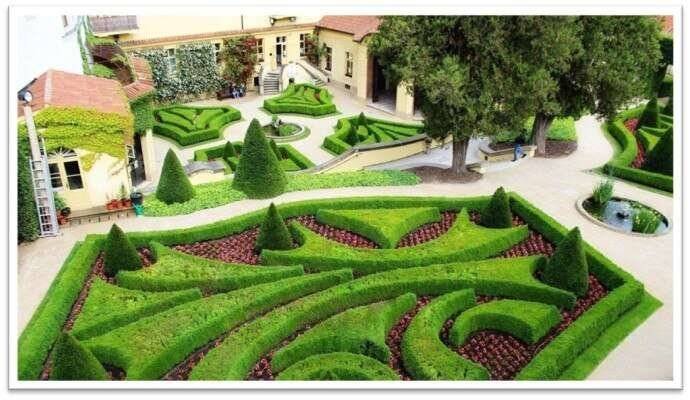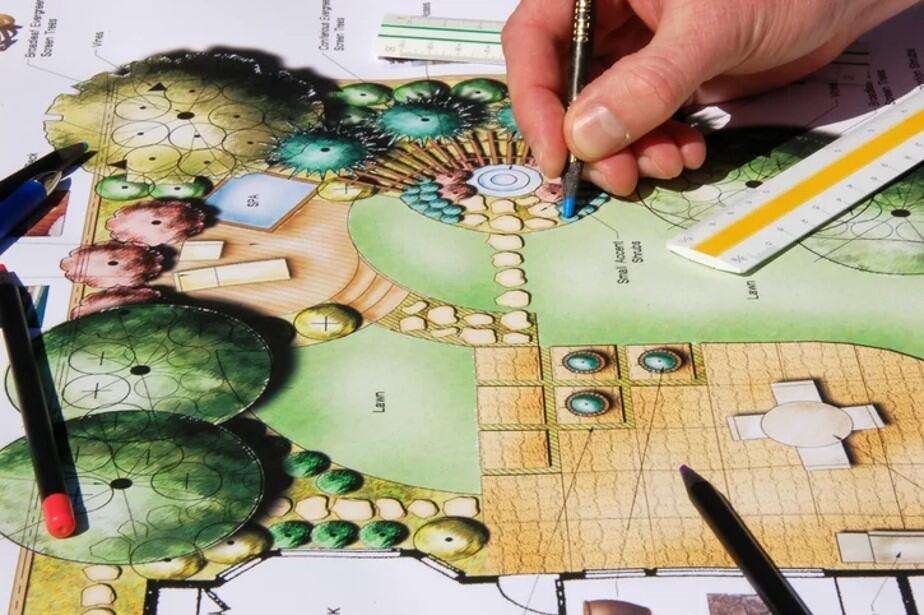This guide will discuss how to become a professional landscape designer with tips and tricks.

What you will read in this Blog?
ToggleWhy a Professional Landscape Designer?
Careers in landscape design are in high demand due to the draw of the great outdoors, the quietness of natural environments, and the growing recognition of the value of eco-friendly areas.
Working as a landscape designer is an appealing and feasible career path for people fascinated by influencing the environment outside their windows. Whether you’re switching careers, are just starting your studies, or are thinking about starting your own business, this in-depth guide will show you how to become a licensed landscape designer.
Qualities of a Professional Landscape Designer
A Professional Landscape designer can be a great profession for young men. Before starting a career in landscape design, it is essential to assess whether your personal qualities are compatible with the field’s demands. The key is creativity; it’s necessary to be able to conceptualize and carry out visually beautiful designs that work well with the surrounding environments.
The most minor details may make or break a design; paying close attention to detail is essential. Furthermore, problem-solving skills are necessary since each project has difficulties that call for creative fixes.
A competent landscape designer should also be well-versed in materials, plants, and design concepts. This guarantees the design’s executability as well as its long-term viability.
Moreover, you will convert intricate drawings into workable plans for various stakeholders, including clients and contractors, so excellent communication skills are crucial.
Role of Professional Landscape Designer

The role of a professional landscape designer is very high. Landscape designers are the unsung heroes who turn ordinary plots of land into dynamic, breathing works of art that combine functionality and beauty. They cater to a wide range of customers, from developers creating the green core of urban jungles to homeowners longing for tranquil garden getaways. Landscape designers are professionals who create well-balanced outdoor spaces by bridging the fields of ecology, art, and architecture.
Their responsibilities extend beyond simple planting plans or hardscape designs. They design sustainable and functional landscapes by considering human interaction and environmental considerations. They carefully consider the topography, temperature, and plants already present on the site to create designs that are not only resilient but also thrive over time.
Educational Skills Development
A formal education can provide the groundwork you need to succeed as a landscape designer. The first step is an authorized school degree in landscape architecture or design. These programs combine artistic creativity with scientific understanding, emphasizing gardening, environmental science, art, and construction. A professional landscape designer can be adapted to any age person.
Practical experience and internships are equally crucial in enhancing classroom learning. Look for volunteer work, internships, entry-level jobs, or other collaboration opportunities with seasoned experts. This practical experience makes building a network within the industry and applying newly taught concepts to practical projects possible.
For landscape designers, constantly improving their skills is a lifetime endeavor. Attend workshops and seminars and use online resources to keep abreast of the newest methods, technology, and trends. Ongoing education broadens your knowledge base and communicates your dedication to excellence to clients and employers.
Building a Portfolio and Gaining Experience
A professional landscape designer can earn much money with his creative ideas. Having a compelling portfolio can mean the difference between getting hired or getting ignored by a customer. Start by keeping a record of everything you do, including volunteer work and academic assignments. Concentrate on various projects that showcase your versatility; commercial premises, public installations, and home designs all help broaden your portfolio.
Acquiring expertise is frequently a gradual process. Offer to help with neighbourhood initiatives, participate in design competitions, or take on freelance work. Each project you finish allows you to improve your talents and expand your portfolio.
As you finish more projects, your abilities and design style will become more apparent. Ensure your portfolio reflects this; it should develop and grow with your experience, demonstrating your most excellent work and approach to different design difficulties.
Getting Your First Job and Managing the Job Market
Making an impression is crucial in today’s cutthroat employment market. Create a CV and cover letter accentuating your most applicable experiences and abilities. Make sure your application materials are tailored to each job description and highlight how you can meet particular requirements. A professional landscape designer is a high demand profession.
One tried-and-true way to find a job is through networking within the field. Participate in industry gatherings, join trade associations, and communicate online and offline with designers and companies. These contacts can provide information about job opportunities before they are made public.
Preparing for an interview is essential. Research the business and formulate questions that show you are interested in and knowledgeable about what they do. Emphasize your problem-solving abilities and practical experience since employers will be especially interested in them.
The Commercial Aspect of a Professional Landscape Designer
Launching a landscape design company is exciting for those inclined toward entrepreneurship. First, investigate the legal prerequisites, such as company licenses and professional certifications. Creating a strong business plan and comprehending pricing models are essential in the early phases of a new firm.
Client management is just as crucial to the firm as design work. Developing enduring relationships with clients can result in referrals and repeat business, which are essential to the success of many design organizations. Project budgets, schedules, and expectations should all be communicated clearly to guarantee a seamless process from beginning to end. A professional landscape designer is a very creative man.
As a landscape designer, it’s important to identify your unique selling points (USPs). Do you support environmentally friendly design? Are you an expert in any particular project or material type? Determine and promote these USPs across various platforms, such as speeches and social media.
Potential for a landscaping designer
In this guide, we discuss how to become a professional landscape designer. The field of landscape design is constantly changing. One trend to watch in the future is the ongoing focus on eco-friendly and sustainable design. These days, it’s not just a fad—these factors are vital as we work to design environmentally conscious living environments.
Technology is also significantly impacting the business, including innovative irrigation systems that control water consumption and 3D modelling software that aids in visualizing designs. Staying current with these tools and their uses can offer you a competitive advantage. A professional landscape designer makes nature creative.
In urban planning and development, landscape designers play an increasingly important role. Green areas are becoming increasingly crucial for city community well-being and public health.
Designers with experience in urban areas and the capacity to work on large-scale projects will have new and intriguing opportunities.
Summary
Landscape design may be a fulfilling vocation for people who approach the field with love, perseverance, and an unwavering quest for knowledge. It’s a field worth investigating because of the creative opportunities, the possibility of having a beneficial environmental influence, and the satisfaction of seeing your concepts come to reality. Participate in the community, impart your knowledge, and keep developing as a designer. Your future in the burgeoning field of landscape architecture is here.
These materials can be helpful for anyone who wants to learn more about a profession in landscape design:
American Society of Landscape Architects
- The Cultural Landscape Foundation
- Landscape Institute
- Books: A selection of recommended reading materials on landscape design and related topics.
- Online Courses and Tutorials: Websites and platforms offering relevant online courses and tutorials.
- Books and Online Resources
- Here are some recommended books and resources that can provide invaluable guidance along your path to becoming a landscape designer:
- Books
- The Non-Designers Design Book by Robin Williams
- Landscape Graphics by Grant Reid
- Landscaping Principles and Practices by Jack E. Ingels
- The Artful Garden by James van Sweden and Tom Christopher
- Designing the New American University by Michael Crow and William B. Dabars
- Workshops and Online Resources
- Coursera
- Landscape Institute







